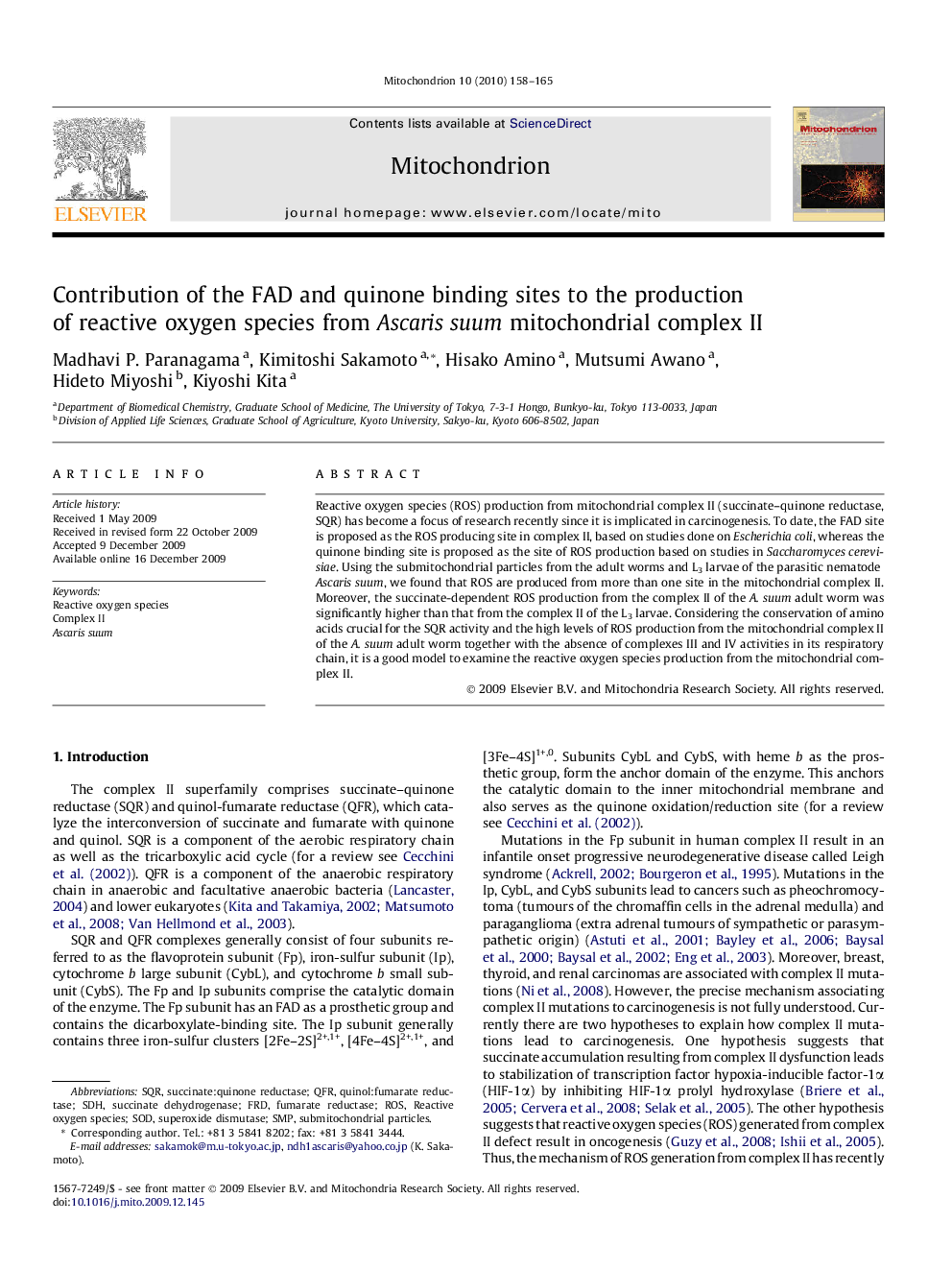| کد مقاله | کد نشریه | سال انتشار | مقاله انگلیسی | نسخه تمام متن |
|---|---|---|---|---|
| 2069012 | 1078371 | 2010 | 8 صفحه PDF | دانلود رایگان |

Reactive oxygen species (ROS) production from mitochondrial complex II (succinate–quinone reductase, SQR) has become a focus of research recently since it is implicated in carcinogenesis. To date, the FAD site is proposed as the ROS producing site in complex II, based on studies done on Escherichia coli, whereas the quinone binding site is proposed as the site of ROS production based on studies in Saccharomyces cerevisiae. Using the submitochondrial particles from the adult worms and L3 larvae of the parasitic nematode Ascaris suum, we found that ROS are produced from more than one site in the mitochondrial complex II. Moreover, the succinate-dependent ROS production from the complex II of the A. suum adult worm was significantly higher than that from the complex II of the L3 larvae. Considering the conservation of amino acids crucial for the SQR activity and the high levels of ROS production from the mitochondrial complex II of the A. suum adult worm together with the absence of complexes III and IV activities in its respiratory chain, it is a good model to examine the reactive oxygen species production from the mitochondrial complex II.
Journal: Mitochondrion - Volume 10, Issue 2, March 2010, Pages 158–165